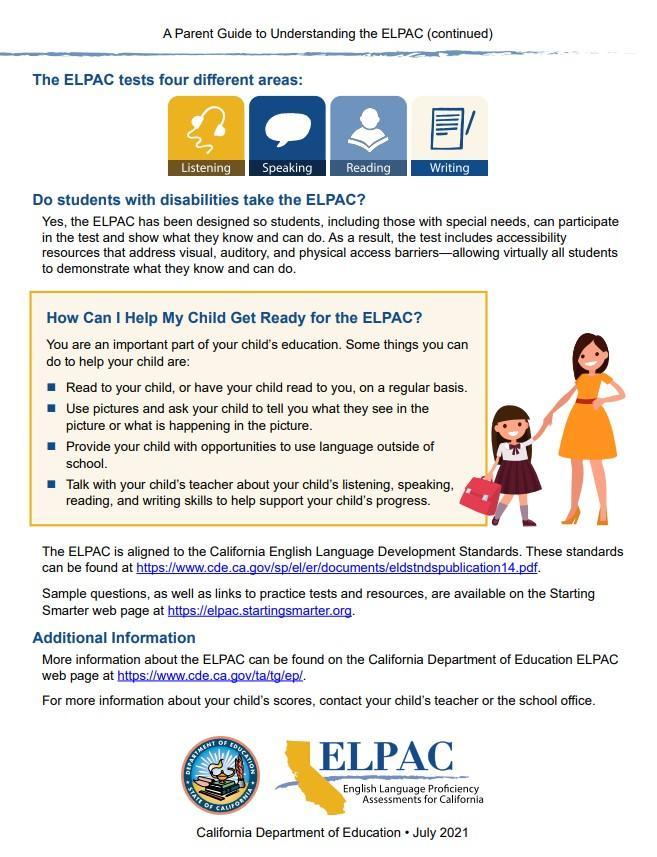Teaching and learning are at the heart of everything we do. The BHUSD Education Services Department leads the development and implementation of high-quality curriculum, instruction, assessment, and academic programs that support every student in realizing their full potential. From early literacy to advanced coursework, we are committed to delivering Educational Excellence in every classroom, every day.
Key Information & Resources
Please click on the following links to view or download the report cards of our schools.
Restraint and Seclusion Data
For downloadable data files containing student restraint and seclusion data for local educational agencies (LEAs) and non-public/non-sectarian (NPS) schools disaggregated by race/ethnicity, gender, and student program group, click here.
CAASPP
The California Assessment of Student Performance and Progress, or CAASPP, is the state academic testing program that includes the Smarter Balanced Assessment Consortium (SBAC) tests in English Language Arts and Mathematics and the California Science Test (CAST).
CAASPP is a system intended to provide information that can be used to monitor student progress and ensure that all students leave high school ready for college and career.
The Smarter Balanced Assessment System utilizes computer based tests and performance tasks that allow students to show what they know and are able to do. It is based on the Common Core State Standards (CCSS) for English language arts/literacy (ELA) and Mathematics and has three components designed to support teaching and learning throughout the year: the summative assessments, the interim assessments, and the Digital Library of formative assessment tools.
Our Spring 2026 assessments will be given as follows:
- BHHS: April 9th through May 1st
- BVMS: April 27th through May 4th
- ER & HM: April 23rd through May 15th
ELA and Math: Grades 3-8 and 11
Science: Grades 5, 8, and 10
More information can be found here: ca.startingsmarter.org/
Practice and Training Tests can be found here, select student portal: caaspp-elpac.org/resources/preparation/practice-and-training-tests
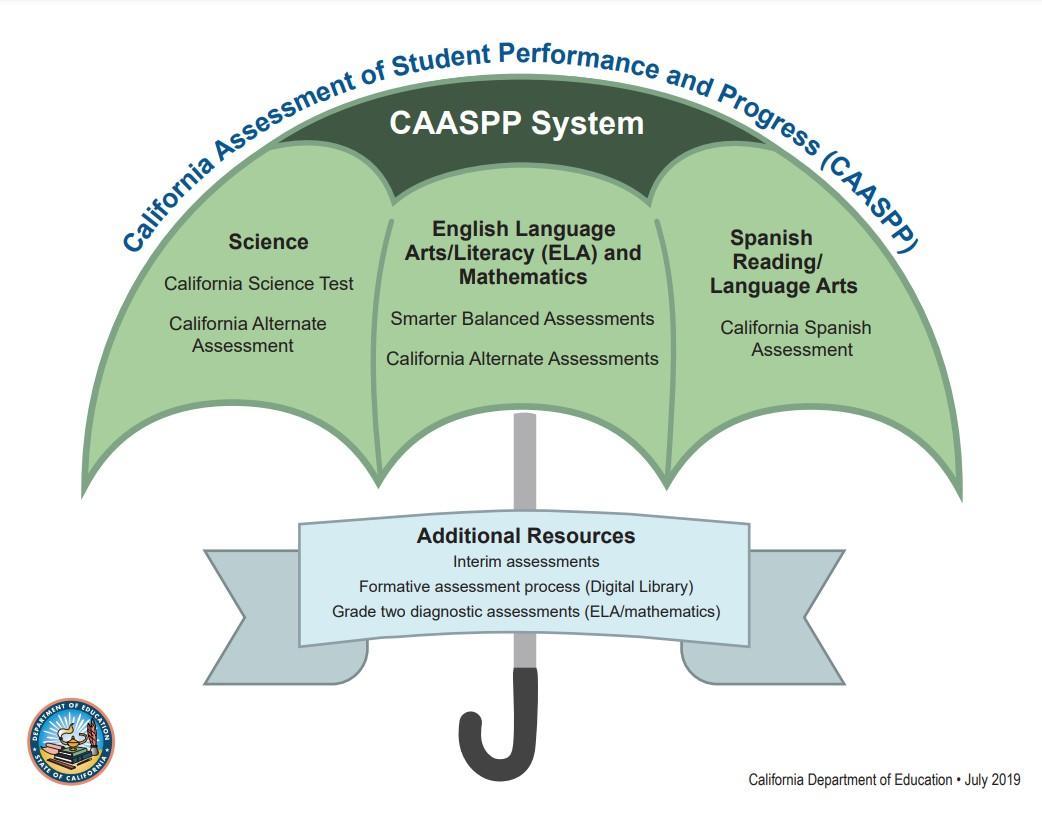
2020-21 (& Forward), 2019-20 (& Previous) CAASPP Scale Score Range
ELPAC
The English Language Proficiency Assessments for California, or ELPAC, is California's assessment system that is used to determine the English language proficiency of students whose primary language is not English.
Upon registration, parents will be asked to complete the Home Language Survey. If you respond with a language other than English to any of the first 3 questions, your child will be given the Initial ELPAC at their school.
The purpose of the Initial ELPAC is to determine the English proficiency of students entering California for the first time. Identifying students who need help learning English is important so students get the extra help they need to do well in school while receiving instruction in all school subjects.
More information can be found here:
OLSAT
The Otis-Lennon Ability School Test, or OLSAT, is the online evaluation given to determine whether or not a student qualifies for the Gifted and Talented Education (GATE) program.
The OLSAT is a multiple-choice assessment comprised of verbal and nonverbal sections The verbal section contains verbal comprehension and verbal reasoning questions while the nonverbal section contains different types of pictorial reasoning, figural reasoning and quantitative reasoning questions.
All students in 3rd grade are assessed in the spring, typically during the month of March. Please contact your school's assistant principal for information on testing for students in the 4th-8th grades.
More information can be found here: pearsonassessments.com/content/dam/school/global/clinical/us/assets/olsat8/olsat8-overview-brochure.pdf
SAT and PSAT
College Board Suite of Assessments
- Freshman attending BHHS will take the PSAT 8/9 on October 22nd
- Sophomores attending BHHS will take the PSAT 10 on March 18th
- Juniors attending BHHS will take the PSAT/NMSQT (National Merit Scholarship Qualifying Test) on October 22nd and the official SAT on March 18th.
Both the fall and spring School Day administrations are funded by the District.
Students can create an account and view their scores on College Board's online score reporting portal found here: https://studentscores.collegeboard.org/home
ACT
Free ACT practice exams are offered throughout the school year via the BHHS College and Career Center.
Most colleges accept the SAT or the ACT, so students do not need to take both exams. The best way to determine which test students should focus on (SAT or ACT) is to take a full-length practice test. This will provide students a comparison of scores, as well as their experience with each testing platform.
Keep in mind that many colleges and universities, including the UC schools, require the optional Writing section.
AP Exams
Research consistently shows that AP students are better prepared for college than students who don't take AP, regardless of their exam score. They're more likely to enroll and stay in college, do well in their classes, and graduate in four years.
There are 38 AP courses in disciplines such as the arts, English, history, social science, math and computer science, the sciences, and world language and culture. You should choose an AP course based on what subjects you're passionate about as well as what classes you do well in.
Taking AP courses in high school can help you:
- Get a taste of college
- Develop college skills
- Discover your passion
- Boost your GPA
Taking AP courses and exams in high school could give you an advantage in college by letting you:
- Earn college credit and placement
- Stand out to colleges
- Save money and time
- Keep your options open
For more information visit apstudents.collegeboard.org/what-is-ap
AP Exams are May 4-17, 2026
i-Ready
What is i-Ready? i-Ready is an online program that will help us determine your child’s strengths and areas for growth, personalize their learning, and monitor their progress throughout the school year. i-Ready allows us to meet your child where they are and provides us with data to inform instruction.
The i-Ready Diagnostic is an adaptive assessment that adjusts its questions based on student responses. Each item a student receives is based on their answer to the previous question. For example, a series of correct answers will result in slightly harder questions, while a series of incorrect answers will yield slightly easier ones. The purpose of this is not to give your child a score or grade but to determine how to best support their learning.
i-Ready Instruction provides students with lessons based on their individual strengths and areas for growth. These lessons are interactive and provide strategic supports to keep your child engaged as they learn.
For a brief family overview of i-Ready, please watch this short video: Introducing i-Ready for Families
What can I do to help? To help prepare your child for the i-Ready Diagnostic, encourage them to:
- Get a good night's sleep and eat a full breakfast the day of the assessment.
- Try their best on each question and try not to rush.
- Try not to worry about questions they do not know - remind them that it is expected they will get only about half of the questions correct.
- Be respectful of other students who take longer to finish.
To support your child’s learning with online lessons, you can:
- Discuss your child's progress on their i-Ready lessons.
- Celebrate your child's learning and growth.
- If your teacher encourages them to use i-Ready lessons at home, reference these Fridge Tips to provide support.
i-Ready Suggestions:
- Communication Templates- here you’ll find a number of pre-drafted communications that our team has approved for use if you wanted to pull information from the templates. There are a number of communications overviewing components of i-Ready, including the Diagnostic and Personalized Instruction, that you may find helpful.
- Family Video- this video could be a helpful resource for families in understanding i-Ready.
- Social Media Kit- this is designed more so for posting on social media, however, you can utilize these resources as well if you would like to share any on your website.
NWEA MAP Growth
RIT Scores
MAP Growth uses the RIT (Rasch Unit) scale to help you measure and compare academic achievement and growth. Specifically, the scale measures levels in academic difficulty. The RIT scale extends equally across all grades, making it possible to compare a student's score at various points throughout their education.
What does a specific RIT score mean? A RIT score represents the level where a student is just as likely to answer items at a particular RIT score incorrectly as they would answer them correctly.
Relation to Standards
In addition to RIT scores, MAP Growth provides specific learning statements showing the content associated with each RIT band. Those learning statements are directly aligned to your state standards.
As standards change, NWEA makes new alignments so that RIT scores and learning statements still maintain the same meaning in terms of academic difficulty. Those changes result in new test versions, but the new versions will not significantly impact student scores, growth measurements, nor the ranking against NWEA norms.
However, it is possible that the introduction of new standards into MAP tests impact the Instructional Areas (or "goal areas") that appear on MAP reports. For this reason, the best practice is to adopt new tests at the start of your academic year, not mid-year.
Relation to Instruction
You can use MAP Growth to inform unit planning along with high-quality formative assessment to inform daily instruction and identify the most important learning needs and maximize growth for all students. For more information, see Instructional Resources.
The goal of CTIP is to support and mentor participating beginning teachers during the induction period of their professional development. CTIP is a statewide program aimed at nurturing and guiding newly credentialed teachers through their first few years of teaching. CTIP assumes that no matter our experience and strengths, we all want to continue improving our teaching and student performance over time. Based on nearly two decades of research, the CTIP program is organized around experiences teachers work on to improve their own practice and student performance.
Each CTIP Support Provider supports beginning teachers through weekly professional growth conferencing, monthly professional development seminars, classroom observations, and individualized coaching. Through this integrated system of support and assessment, participating teachers are provided with an array of professional development opportunities to develop self-confidence and professional expertise.
By using information gathered through the formative self-assessment process, beginning teachers will identify areas of strength and areas of study or focus and are measured by the California Standards for the Teaching Profession (CSTP).
BHUSD is proud to announce our partnership with the University of the Pacific to allow our CTIP Candidates and Mentors to earn CEUs. Prior to pursuing CEUs, teachers must seek approval from their site Principal and Human Resources by completing and submitting the BHUSD CEU Prior Approval Form. Upon approval, teachers may register for their appropriate course.
Please see the links below for appropriate forms, course descriptions, and course registration.
Common Core State Standards (CCSS) and Next Generation Science Standards (NGSS)
Beverly Hills Unified School District curriculum and assessments are fully aligned with COMMON CORE STATE STANDARDS (CCSS). The Board of Education continues to fund CCSS implementation, which includes supporting curricular materials, professional development, and technology.
For more information regarding CCSS, please review the links below.
ELA
Math
In addition to CCSS, BHUSD is aligned with the NEXT GENERATION SCIENCE STANDARDS (NGSS). For additional information about the NGSS, please see the following links:
Please continue to check this page for updates related to the Common Core State Standards and the Next Generation Science Standards.
California A - G Requirement
All BHUSD students are required to meet California A - G to earn their high school diploma. For more information regarding California A - G requirements, please visit the link below.
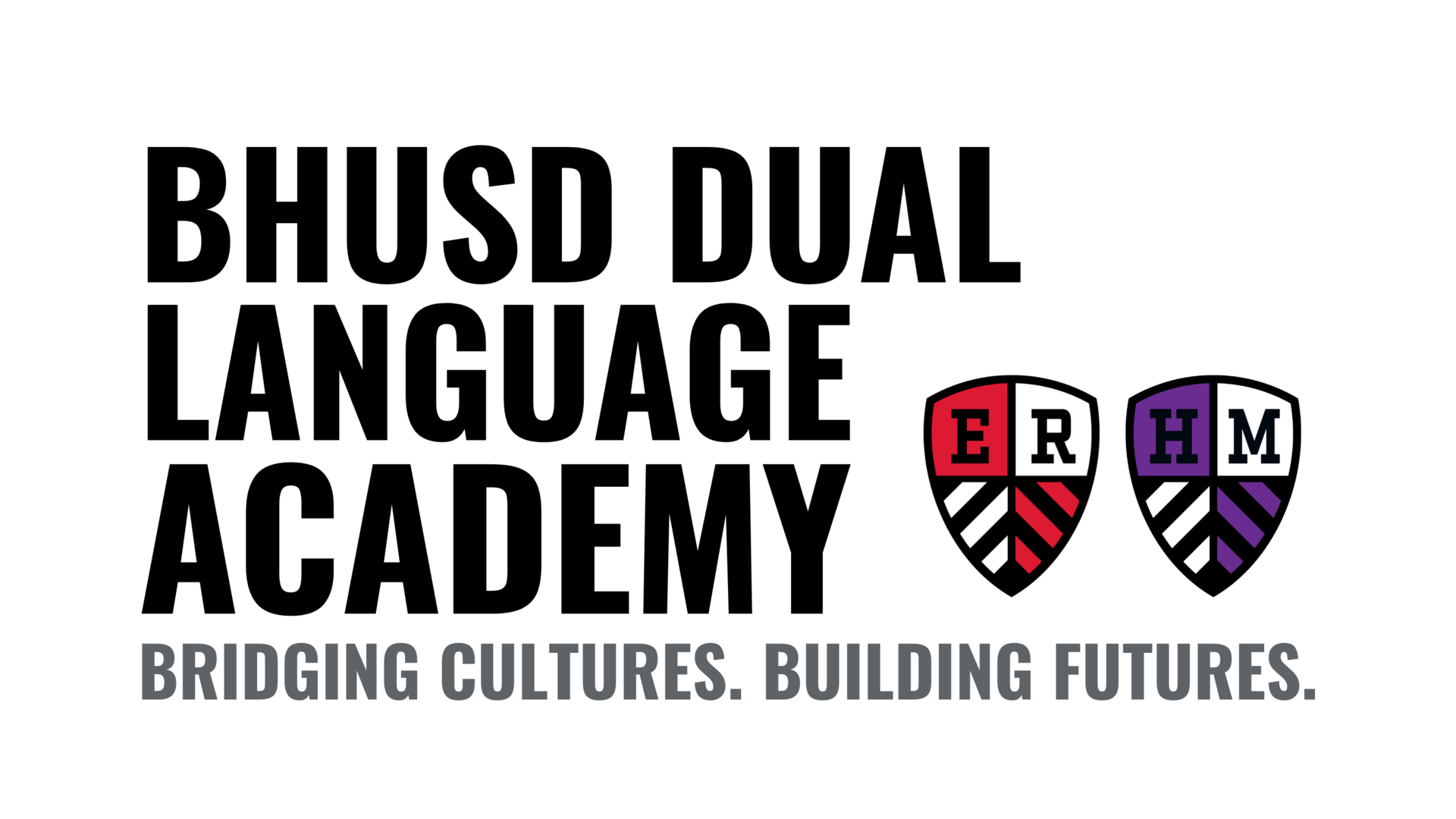
The BHUSD Dual Language Academy (DLA) is an educational program designed to develop fluent bilingual students who demonstrate academic excellence while fostering cross-cultural understanding, confidence, and biliteracy. Through this program, students engage in immersive instruction in both Spanish and English, beginning in Kindergarten or 1st Grade and continuing through 5th Grade.
This program is grounded in research-based instructional models proven to:
- Enhance cognitive development and critical thinking
- Foster higher academic achievement among both English-only and multilingual learners
- Develop strong bilingual communication skills that prepare students for the California State Seal of Biliteracy
- Increase long-term college and career opportunities in a global economy
- Cultivate respect for diverse cultures and global citizenship
- Strengthen personal confidence and academic perseverance
Spanish was selected as the target language due to its status as the second most widely spoken language in California and across the U.S., its rich availability of standards-aligned curriculum resources, and the depth of local professional development and bilingual educators.
The Dual Language Academy will be hosted at both El Rodeo Elementary and Horace Mann Elementary for the 2025–2026 school year. BHUSD will open one Kindergarten class at each school site and one 1st grade class at each school site.
FAQ Enroll
The State of California requires that EL students develop English language proficiency and learn academic content simultaneously. BHUSD implements Structured English Immersion (SEI) as the instructional model for English language Development (ELD). Please contact your classroom teacher or your school's EL teacher for more information.
- Matthew Sun: Beverly Hills High School
- Erica Gibson: Beverly Vista Middle School
- Elizabeth Sales: El Rodeo Elementary
- Cherryne Luesang: Horace Mann Elementary
Structured English Immersion (SEI) Teachers use special instructional strategies, Specially Designed Academic Instruction in English (SDAIE) and integrated ELD strategies to ensure that EL students are able to understand and complete academic tasks. Instruction and learning happen mostly in English. However, teachers and students may use the student's home language(s) to make learning more efficient. Students are encouraged to use digital translators, peer translators, or bilingual dictionaries to support classroom learning.
All EL students receive a minimum of 30 minutes of Designated ELD. In the elementary grades, the classroom teacher provides EL instruction during the school day in small groups. During this time, students learn about English grammar, sentence structure or may learn specific vocabulary words they will need to participate in larger settings. In middle and high school, EL students receive a minimum of 1 period of designated ELD with the EL teacher. No EL students are removed from their class to for EL services.
Initial ELPAC
When you complete the Home Language Survey, if you respond with a language other than English to any of the first 3 questions, your school will administer the Initial English Language Proficiency Assessment (ELPAC). We administer the ELPAC during the first month of school. The ELPAC is California's assessment to help schools determine which students need extra instruction to develop English proficiency.
If your child has previously attended a California public school, we will access those records and provide services based on your student's language proficiency.
State and federal laws require all public school districts in California to assess students’ English fluency. If you have completed the Home Language Survey in error, please contact your school immediately.
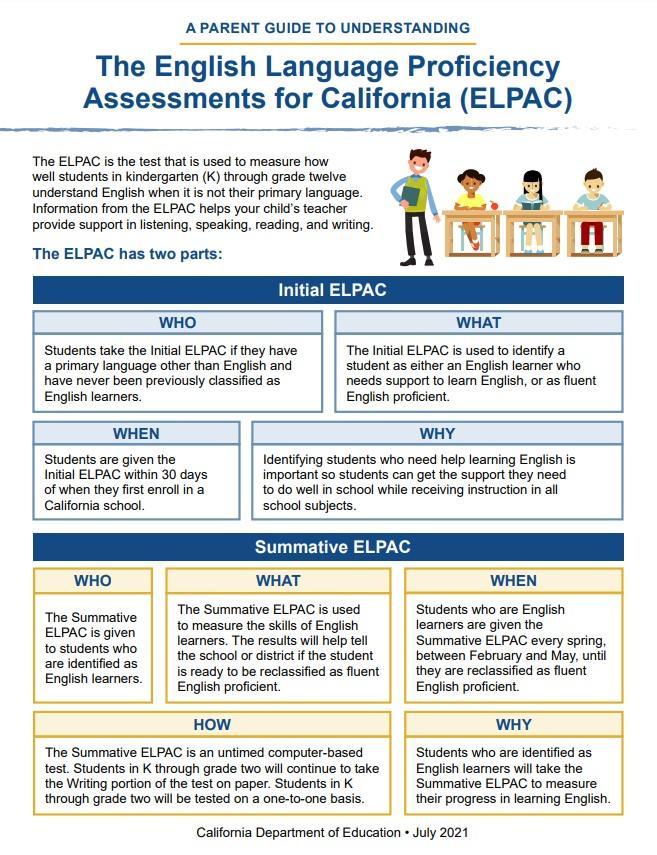
Summative ELPAC
Each spring all EL students will take the English Language Proficiency Assessments for California (ELPAC). The ELPAC will assess students in four domains: reading, writing, speaking and listening. The scores from the ELPAC will be used to exit students from the EL program and to monitor their proficiency in English.
Please follow the links below for important information:
- Resources: https://elpac.startingsmarter.org/
- Practice tests: https://capt.tds.cambiumast.com/student
- ELPAC website: https://www.caaspp-elpac.org/
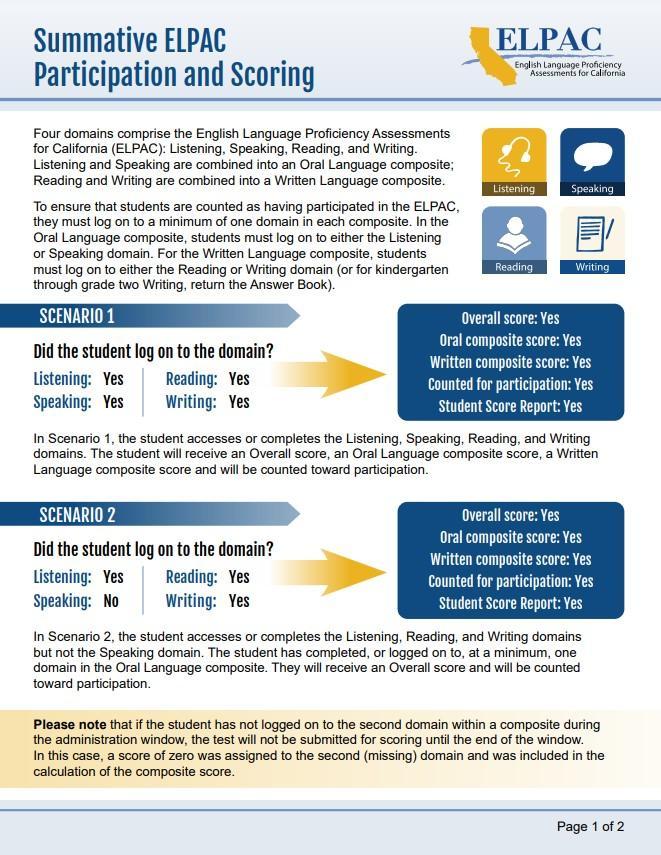
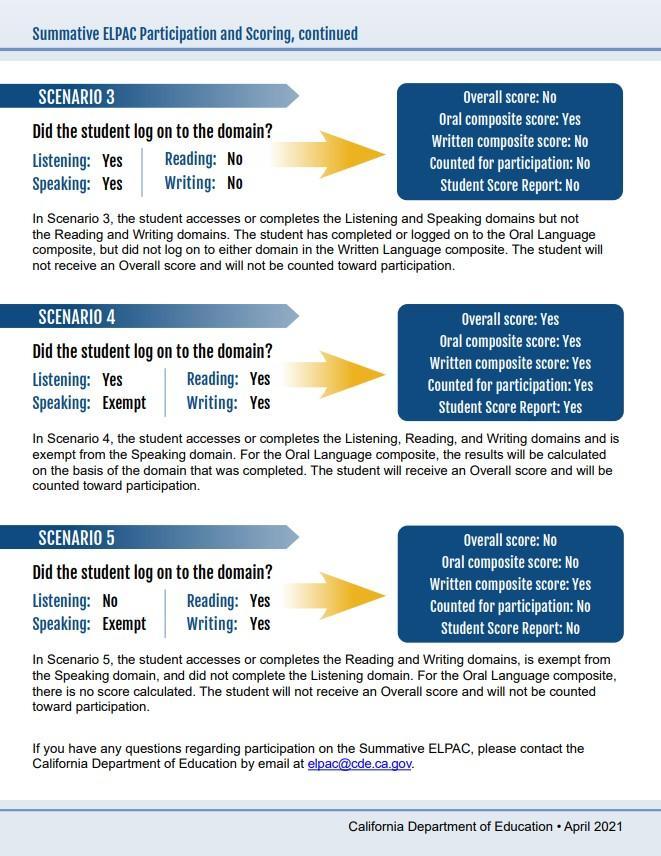
Parent Participation
Students learning English need special support to become proficient with English and English language related to academic skills. One part of this support is our committees that help guide our work and are composed of parents of English Learners (EL).
Each school has their own English Language Advisory Council (ELAC). This group of parents provides input and advice for their school's planning. These meetings occur three times a year. Please contact your school's English language coordinator (ELC) for more information.
Additionally, the district hosts a District English Language Advisory Council (DELAC). This group provides input and advice to the superintendent. To participate in the District committee, please contact Dr. Dustin Seemann, Assistant Superintendent of Education Services: [email protected]
The dates for the 2025-2026 DELAC meetings are:
- September 18, 2025 10:00 AM to 11:00 AM
- January 22, 2026 10:00 AM to 11:00 AM
- May 5, 2026 10:00 AM to 11:00 AM
Agendas for previous and current BHUSD DELAC are posted below.
- Reclassification Criteria for 2025-2026
- Reclassification Criteria Beginning 2024-2025
- DELAC #1 Agenda 2025-2026
- DELAC #1 Minutes 2025-2026
- DELAC #2 Agenda 2025-2026
- DELAC #1 Agenda 2024-2025
- DELAC #1 Minutes 2024-2025
- DELAC #2 Agenda 2024-2025
- DELAC #2 Minutes 2024-2025
- DELAC #3 Agenda 2024-2025
- DELAC #3 Minutes 2024-2025
- DELAC #1 Agenda 2023-2024
- DELAC #1 Minutes 2023-2024
- DELAC #2 Agenda 2023-2024
- DELAC #2 Minutes 2023-2024
- DELAC #3 Agenda 2023-2024
- DELAC #3 Minutes 2023-2024
- DELAC Agenda #1 2022-2023
- DELAC Minutes #1 2022-2023
- DELAC Agenda #2 2022-2023
- DELAC Minutes #2 2022-2023
- DELAC Agenda #1 2021-2022
- DELAC Minutes #1 2021-2022
- DELAC Agenda #2 2021-2022
- DELAC Minutes #2 2021-2022
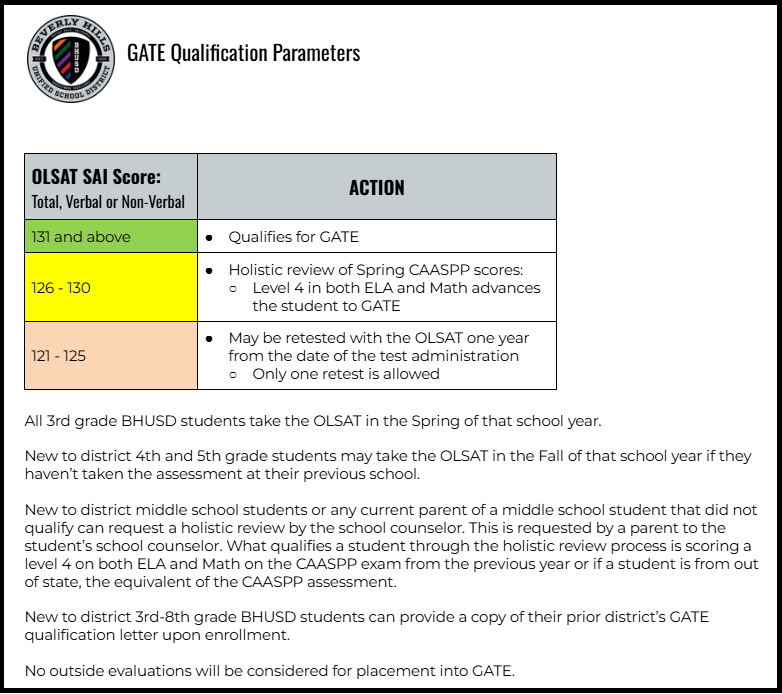
Instruction for GATE Students: Classroom teachers differentiate instruction and create challenging learning experiences for GATE students within the instructional day. We provide ongoing professional development for teachers of all grade levels. Our professional development includes curricular modification by including elements of gifted instruction (Depth, Complexity, Novelty and Acceleration) into the standard curriculum. These elements may be combined with other thinking prompts (ethics, motive, contexts, etc) to increase complexity and rigor.
Some of our gifted students are also identified through the special education program. Throughout the gifted community, these students are known as "twice exceptional". Our "twice exceptional" students and parents are encouraged to fully participate in all aspects of the BHUSD GATE program.
Students in the 4th and 5th grades will be grouped within a class. This practice is called cluster grouping. This practice will provide gifted students with sufficient intellectual collegiality within a class while also providing diversity within each class for all students to learn with and from each other.
Do you still have questions about classroom differentiation for gifted students? Contact your classroom teacher directly to better understand the ways academic content is customized for your student.
Enrichment Opportunities Outside of the School Day: BHUSD offers after school enrichment classes for GATE identified students.
GATE Resources for Parents
Does your student show interest in the environment or in the natural sciences? Please consider these opportunities for non-academic learning that may lead and prepare students for a career in the great outdoors!
- California State Parks - Kids in Parks kids.parks.ca.gov/?page_id=25384
- Cabrillo Marine Aquarium - cabrillomarineaquarium.org
- Summer Institute for the Gifted - The Summer Institute for the Gifted (SIG) offers an enrichment program for academically accelerated students. For more information about SIG, please visit giftedstudy.org/programs.asp
- California Association for the Gifted (CAG) - Website for the California Association for the Gifted (CAG). Please check their website for more information. cagifted.org (909) 522-7274
- National Association for Gifted Children (NAGC) - The National Association for Gifted Children (NAGC) is an advocacy group made up of parents, professional educators, and affiliate groups from the various states to support gifted education at the national level. nagc.org
- Supporting the Emotional Needs of the Gifted (SENG) - SENG (Supporting the Emotional Needs of the Gifted) was created in 1981 to bring attention to the unique social and emotional needs of gifted individuals. sengifted.org
The partnership between the ILC and parents cannot be overstated to enable student success. In alignment with the BHUSD school calendar, the program runs Monday through Friday.
If you wish to attend the ILC you must be enrolled in BHUSD. Visit bhusd.org to do so. If you are already enrolled, please see your school counselor for more specific information on the program and qualifications.
The secondary program covers grades 6th through 12th. Each student will remain in their current school as a Norman (BHHS) or Bulldog (BVMS) while attending the ILC.
The ILC for Grades 6-12 uses the platform APEX Learning. Students are required to complete all curriculum and assessments through APEX. Students will average roughly 5 hours of independent work daily.
The ILC teacher will meet with the student individually each week for 1 hour to help mentor, tutor, and stay organized. This meeting is when work will be due for the week and any grading or assessment questions can be addressed. The ILC teacher, student and family will agree to that weekly meeting day and time.
In addition, students can attend Multiple Student Tutoring (MST) sessions virtually or in-person for 2 hours weekly per subject (Math, English, Social Studies, Science, and World Language) for extra help.
Independent study (California Education Code [EC] sections 51745–51749.3) is provided as an alternative instructional strategy, not an alternative curriculum. Independent study students work independently, according to a written agreement and under the general supervision of a credentialed teacher or teachers. While independent study students follow the district-adopted curriculum and meet the district graduation requirements, independent study offers flexibility to meet individual student needs, interests, and styles of learning.
Required
Each student will have a mandatory 1 hour, in-person, weekly individual meeting with their assigned Independent Study (IS) teacher to go over coursework, mentor, tutor and keep organized. This schedule will be set up by the IS teacher in collaboration with the student and parent.
Days required in-person on campus:
PSAT/SAT testing
Benchmark and State testing
College/Career Days
All students in the IS program will have access to:
Standards aligned content in IS that is substantially equivalent to the quality and intellectual challenge of in-person instruction.
- High school students will have access to all courses offered by the LEA for graduation and approved by the University of California or the California State University as creditable under the A–G admissions criteria.
FAQs
- If I enroll in the ILC, can I transfer back to traditional school? Students cannot transfer to and from the ILC. A one semester minimum commitment is required. Each semester a new contract must be signed and consultation be held.
- My child is eligible for free and reduced lunch. Can they still receive a meal daily? All students in the ILC will still have access to the free and reduced lunch program. Families will need to pick-up their lunch at a designated location.
- Is this NCAA (National Collegiate Athletic Association) and UC (University of California) Approved? Yes, the ILC is both NCAA (National Collegiate Athletic Association) and UC (University of California) approved.
- Can my student return to traditional school mid-year? No, students may return to their physical school during winter break and summer break.
- Who assigns the grades? BHUSD teachers assign marks for completed work using the BHUSD report card.
- What is the parent’s role at BHUSD? Unlike homeschooling, parents are not teachers at BHUSD but they do have an important role in their student’s education. Parents should help their students create a quiet space for work as well as protecting time to complete their work. We recommend 5 hours of work daily. Parents are learning partners and help ensure students are on task and keeping up with their daily work. This assistance with time management is especially important for younger students. Most students require less parental support as they get older.
- What if my student needs additional support? There are MST sessions offered in English, Math, Science, Social Studies, and World Languages for Middle and High School students.
- Can students participate in any extracurricular / after school activities / sports? Yes
- Some of the subjects from our existing schedule are not offered, what do we do? Your counselor will reach out to you to find alternative classes.
- If my child is supposed to take an honors class and APEX doesn’t offer honors for one subject, what should we do? Your child will take the standard (non-honors), they will be placed back into the honors program in the next semester.
If your student needs any support for social-emotional learning or mental health, the student can still access all of the resources and counseling provided by NormanAid or BulldogAid centers.
For any additional information, please contact Ms. Loren Newman, Coordinator of Alternative Education.
The LCAP is a three-year plan that describes the goals, actions, services, and expenditures to support positive student outcomes that address state and local priorities. The LCAP provides an opportunity for LEAs (county office of education [COE], school districts and charter schools) to share their stories of how, what, and why programs and services are selected to meet their local needs. In BHUSD, we use the LCAP as a shortened version of our strategic plan. Our strategic plan is more specific and robust. To view our strategic plan, please click here.
- 2025 LCAP Beverly Hills Unified School District
- 2024 Local Control and Accountability Plan Beverly Hills Unified School District 20240812
- 2022 Expanded Learning Opportunities Program Plan Beverly Hills Unified School District 20240613
- 2022 Expanded Learning Opportunities Grant Plan Beverly Hills Unified School District 20240613
- 2023 Local Control and Accountability Plan Beverly Hills Unified School District 20230713
- 2023 LCAP Local Performance Indicator Self-Reflection Beverly Hills Unified School District 20230621
- 2022 Expanded Learning Opportunities Program (ELO-Program)
- 2022 Local Control and Accountability Plan Beverly Hills Unified School District
- 2021 Local Control and Accountability Plan Beverly Hills Unified School District 20200903
- 2021 A-G Completion Improvement Grant Plan Beverly Hills Unified School District
- 2021 Educator Effectiveness Block Grant Plan Beverly Hills Unified School District 20211105
- 2021 ESSER III Expenditure Plan Beverly Hills Unified School District 20220331
- 2021 Extended Learning Opportunity Plan
- 2020 Learning Continuity and Attendance Plan Beverly Hills Unified School District 20201105
- 2020 LCAP COVID-19 Operations Written Report Beverly Hills Unified School District 20200609
- Amended LCAP 2017-2020
- BHUSD Executive Summary 2017-18 LCFF Update
- BHUSD LCAP
BHUSD welcomed seven new NBCTs in 2023 which ranked 4th out of nearly 1000 districts in California. Seven new NBCTs in 2023 also exceeded the total number of new NBCTs for seventeen USA states. Congratulations to the accomplished and dedicated teachers on their major achievement.
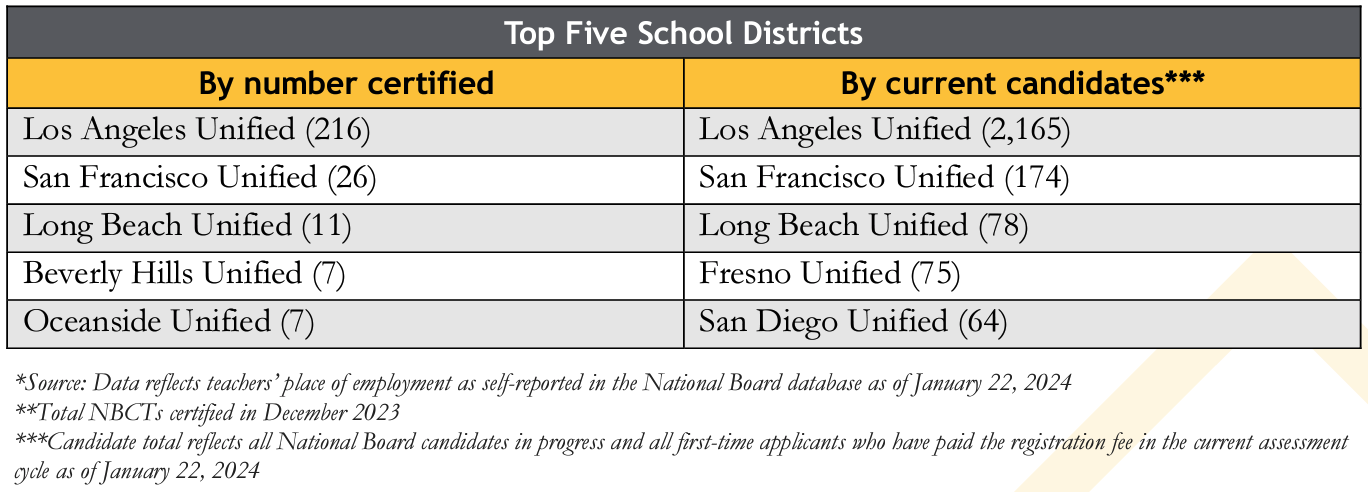
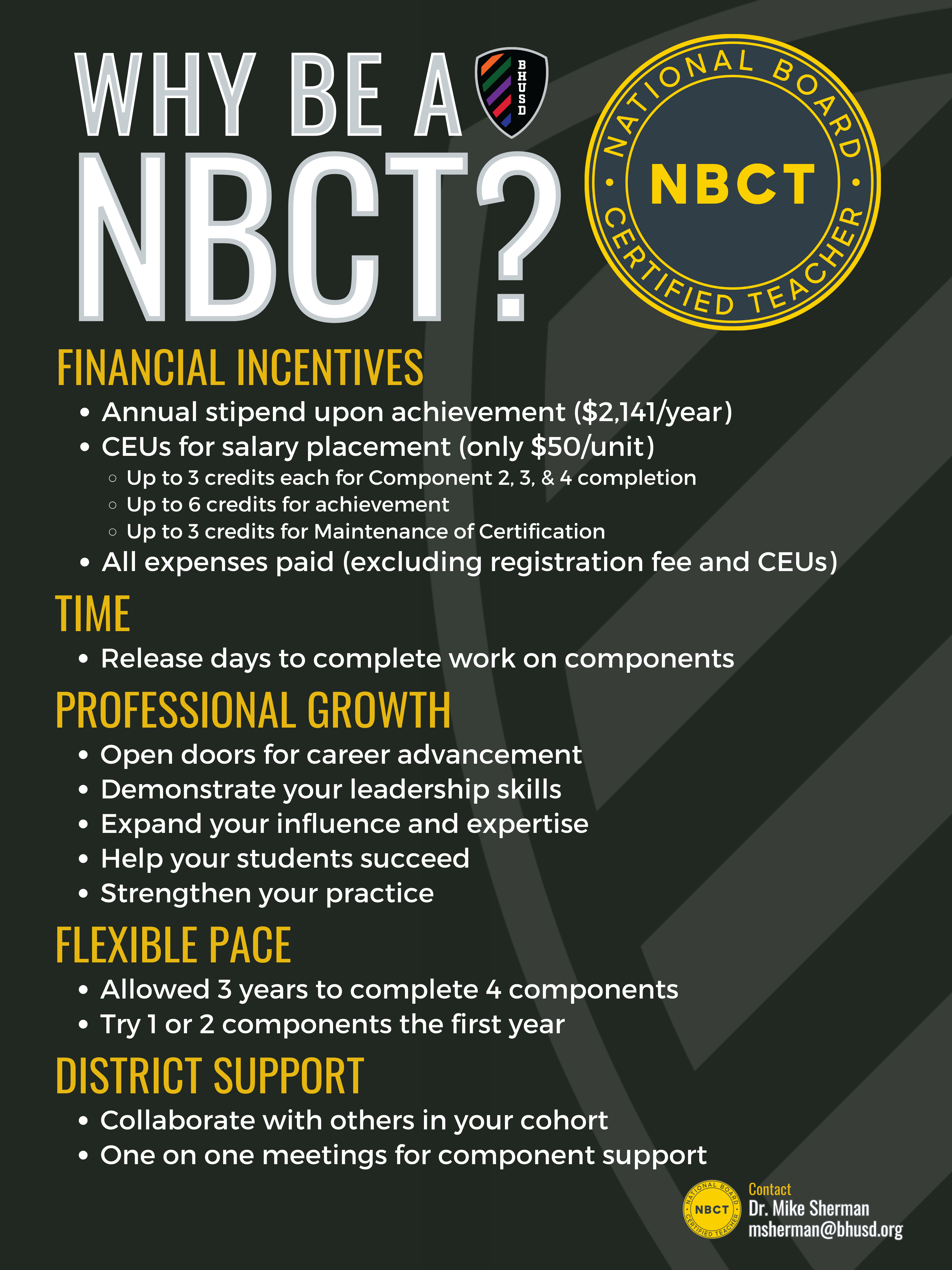
BHUSD is proud to announce our partnership with the University of the Pacific to allow our NBPTS Candidates to earn CEUs. Prior to pursuing CEUs, teachers must seek approval from their site Principal and Human Resources by completing and submitting the BHUSD CEU Prior Approval Form. Upon approval, teachers may register for their appropriate course.
Please see the links below for appropriate forms, course descriptions, and course registration:
The PAC is composed of a principal, teachers, other school personnel, parents, and community members. It is intended to be an advisory board that represents all stakeholders of the school community to the principal. The primary responsibility is to support and advise the principal in implementing the district’s strategic plan. The key to a successful PAC depends upon a good working relationship among all members of the Council. Each member of the Council shares their unique perspective and knowledge of the school’s needs, as they affect all students, during PAC meetings.
The principal and teachers contribute background knowledge in instructional practices; all members provide insights on how effective the school is working toward achieving its goals. At the secondary level, students offer insight into the range and effectiveness of learning opportunities available. Other personnel at the school, such as counselors, instructional aides, and clerical staff can share insights on how the school can function to support goals.
| 2025-2026 |
|---|
| 2024-2025 | 2023-2024 |
|---|---|




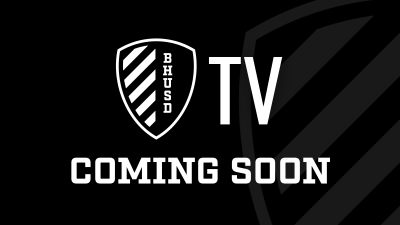
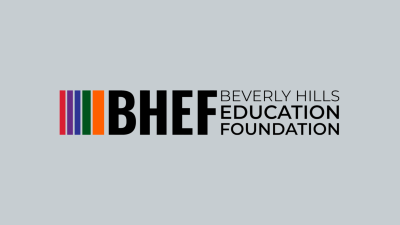

.png?command_1=resize&width_1=400)
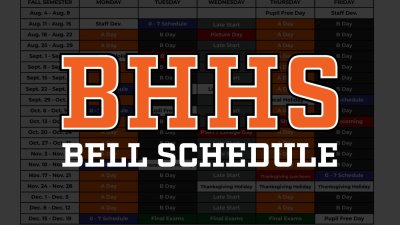



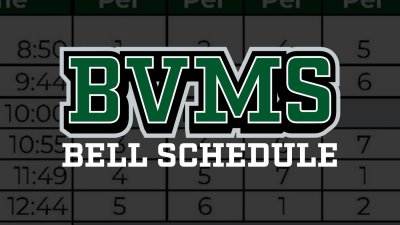
.png?command_1=resize&width_1=400)
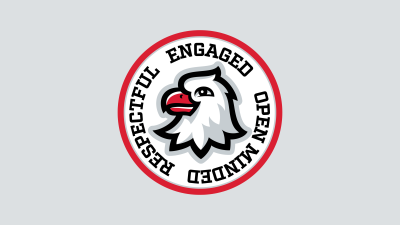
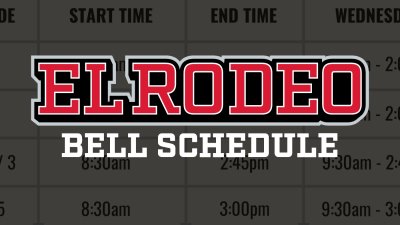
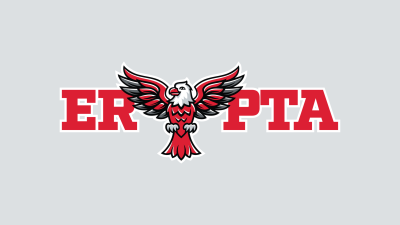
.png?command_1=resize&width_1=400)
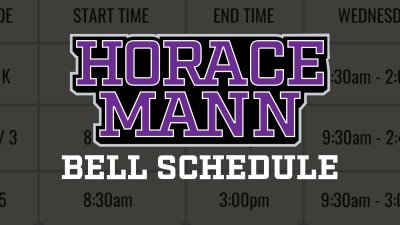
.png?command_1=resize&width_1=400)
